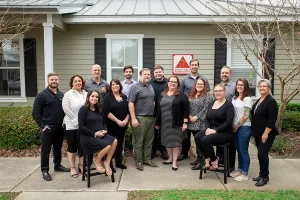Captives 101 – how brokers can leverage this powerful alternative for insureds

Captives 101 – how brokers can leverage this powerful alternative for insureds | Insurance Business America
Insurance News
Captives 101 – how brokers can leverage this powerful alternative for insureds
Amwins Bermuda breaks down this increasingly viable insurance option
Insurance News
By
Gia Snape
This article was produced in partnership with Amwins Group.
Gia Snape of Insurance Business America sat down with Alan Waring of Amwins Bermuda to discuss how captives can be a creative solution to insureds’ individual needs throughout insurance cycles and especially amid a hardening market.
For many businesses, the traditional route of paying premiums for insurance coverage is straightforward and offers adequate protection.
But amid a hard market, especially for casualty, retail brokers may need a viable alternative to cover their clients’ risks that can’t find a home in the standard market. Enter captives.
A powerful risk management tool, captives offer greater control, customization, and potential cost savings. A captive is a form of self-insurance that involves a company creating its own insurance subsidiary to insure its risks, allowing the captive owner or user to tailor their coverage to the needs of their business.
According to Amwins Bermuda’s Alan Waring (pictured), captives, having been around since the 1960s, and have proved to be a tried-and-true risk financing mechanism for organizations of all sizes.
“Captives are medium to long-term solutions and thus are not specific to hard or soft markets,” Waring told Insurance Business. “However, they do become more viable at certain points in the insurance cycle.
“As the market hardens and prices increase, companies with good loss experience often find their premiums becoming disproportionately high versus a comparatively low loss rate. For instance, a company might question paying millions in liability premiums annually when it had less in losses over the past decade.
“Captives offer a solution in such scenarios. Retail brokers need to provide their clients with a full range of options each year, including captives.”
When does a captive make sense for insureds?
The choice between a captive and traditional insurance depends on various factors, including the size of the company, the nature of its risks, and its financial capacity.
According to Waring, three main reasons for considering a captive include:
When the cost of insurance consistently exceeds the cost of claims.
When claims experience make it hard to find affordable insurance.
When claims management by traditional insurers might harm the company’s relationships with vendors, customers, the public, and other stakeholders.
“When any client buys insurance, they aim to manage the cost of various risks to their business,” Waring said.
Waring explained that as companies grow, they often find themselves “dollar-swapping”— paying premiums that they get back in claims.
“Traditionally, insurance works by pooling contributions from many to cover the losses of a few. However, for large companies, their contributions might end up covering their own losses because of the high volume of claims they generate,” he said.
Some companies prefer this, trusting the insurance industry’s efficiency in paying claims. However, mid-sized to large companies may want more control over claims to settle them faster and in line with their corporate culture.
For example, they may set up a captive to manage workers’ compensation claims quickly and fairly, enhancing employee satisfaction. “Instead of paying premiums to an insurer, they pay into a captive, gaining control over claims,” Waring said.
During a hard market cycle, clients with poor claims experience may struggle to get insurance or find meaningful risk transfer, which is where captives can come in.
“For example, construction companies face difficulties due to New York labor laws, which can make liability insurance nearly impossible to obtain,” he said. “In such cases, captives can be a long-term strategic tool to navigate the insurance cycles.”
Owning versus renting a captive – what’s the difference?
While large corporations with significant resources might opt for a wholly owned captive, smaller companies can also benefit from captives by participating in group captives or rent-a-captives.
Renting a captive “cell” allows businesses to enjoy the benefits of captive insurance without the complexities and responsibilities of ownership. This can be a particularly attractive option for small- to medium-sized enterprises (SMEs) that have specific insurance needs but lack the resources to manage a captive on their own.
“A ‘rent-a-captive’ or ‘segregated cell company’ allows third parties to rent a cell from the owner of the insurance company, benefiting from a captive solution without the added responsibilities of full ownership,” said Waring. “Such cells are fully segregated from all other cells in the company, ensuring the assets and liabilities of the cell owner are ring-fenced from others in the structure”
For businesses with substantial and recurring risks, such as companies with large fleets of vehicles or numerous employees, traditional insurance can become less effective, Waring noted.
“For example, a trucking company might rent a captive cell to issue excess liability policies. Between paid in capital, premiums contributed and collateral (usually letters of credit), the policy limit is fully secured. The insurance company owner bears no additional liabilities beyond what the renter has funded,” he said.
“In essence, renting a captive means using an existing insurance company’s infrastructure while fully securing your liabilities.”
Navigating the complexities of captives
Navigating the complexities of setting up a captive can be daunting, which is where wholesalers can be helpful to retail brokers and their clients.
Amwins has extensive relationships with insurance companies, fronting insurers, claims administrators, and captive managers. This network allows them to provide invaluable support to retail brokers who may not have the expertise to set up captives independently.
“When the need arises, retail brokers struggle to get attention from captive specialists, who often require a paid engagement. This makes it hard for them (brokers) to deliver value to their clients,” said Waring.
“As a wholesale partner, we offer a unique captive service and have relationships that allow us to bring the right parties together to create tailored solutions. This support puts smaller brokers on the same footing as top international firms, enabling them to deliver comparable services to their clients.”
Related Stories
Keep up with the latest news and events
Join our mailing list, it’s free!





